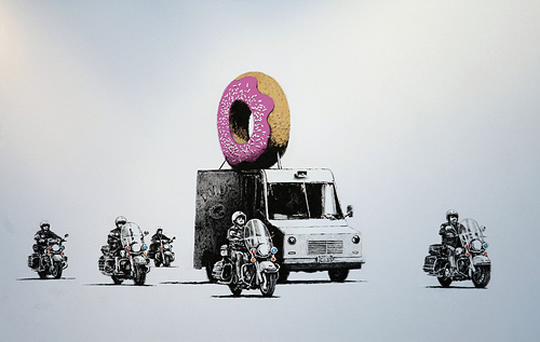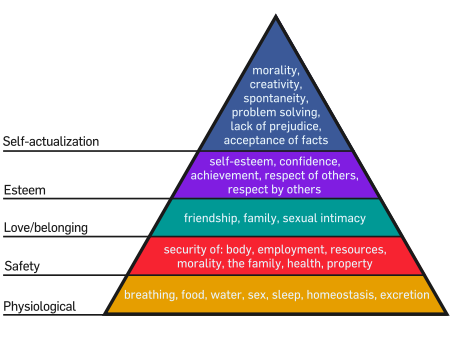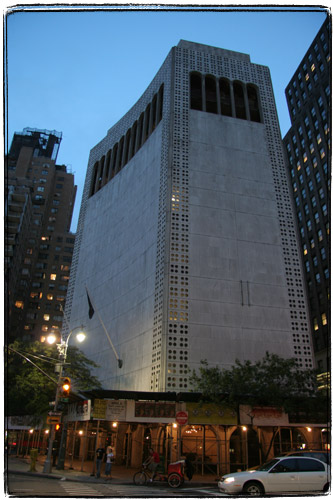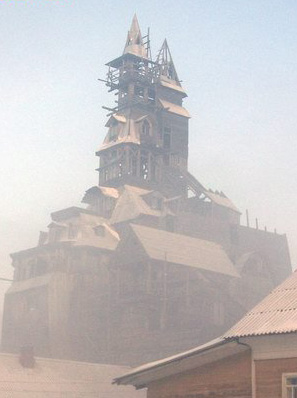My wife’s friend’s pet is a female Pitbull rescued from a dog shelter. Having a 4 year old daughter and two cats I do not approve of pet Pitbulls, or in fact any large dogs bred for attack/defense duty: Rottweilers, German Shepherds, etc. There are other horse-sized dogs capable of grievous harm, but since they were bred for other purposes, like pulling sleds/rescuing people, they are somewhat safer.
But any Pitbull owner will tell you that their dog is “perfectly safe”. No amount of statistics will persuade them that “shnookums” can rip off a toddler’s face or maul a person or kill a cat. I always tell them about “Chekhov’s gun“. The genetic memory of dogs bred for attacking might be dormant most of the time, but you never know what might activate it.
Yet, there are always people out there who underestimate animals, like that woman who had a pet chimp and ended up on the front page of the Post. I’m sure that chimp used to be perfectly reasonable previously. Chimps are seemingly cuddlier than Pitbulls, aren’t they?
Even professionals are sometimes underestimating animals. You probably heard about the tragic death of Steve Irwin, The Crocodile Hunter. He made a career out of teasing dangerous animals on camera and yelling “whoa, crikey” when they lunged at him. He was done in by a stingray, a docile and non-threatening creature.
When you take an unorthodox position about safety of something, there’s alway a chance that your death will be tragically ironic.
For instance, if you rail hard against seat belt laws and die in a car accident in which everyone wearing seat belts walked away from, people will talk. Or poor ol’ Dr. Atkins, promoting the high fat diet dies of heart attack (while weighting 258 pounds). To me, these cases, while ironic, are not absolutely moronic. A lot of people became healthier on the Atkins diet, and a small number of people were killed by properly worn seatbelts.
But when it comes to dealing with wild animals, thinking that they are “perfectly safe if you know what you are doing” – there’s no such thing. If you hang out with wild animals long enough, chances are they’ll kill you. Or at least will try to.
A prime example is Roy Horn, and his tiger accident. It’s not like The Simpsons writers did not predict it. While I was not surprised that a tiger could do harm to Roy (even if he was “carrying” Roy offstage to “save” him), I was very much surprised at what level of medical treatment millions of dollars and fame can get you. They performed a decompressive craniectomy, a procedure that involves removing a quarter of a skull top and storing it in an abdominal cavity(!) for a while to relieve pressure in the brain. I doubt that an HMO patient would last long enough after a tiger attack.

The worst tiger story that comes to mind though is from the Soviet times. There was this guy by the name of Berberov, an architect. He kept a lot of animals in his apartment, but really achieved fame when he raised a lion cub. The lion, named King, lived in a city apartment with Berberov, his wife, kids and a host of other animals (including a wildcat). The lion starred in a number of Soviet films and they wrote a book titled “Don’t be afraid, it’s a lion.” The lion was shot by a policeman when it got away and tried to play with some kid’s dog.

Things were about to get worse. Like the Simpsons, the Berberovs decided to raise an new cat. The Simpsons got Snowball II, the Berberovs – King II. Mr. Berberov died of a heart attack, but his wife insisted on keeping the lion in the apartment still. It ended up badly – the lion, provoked or otherwise, attacked the wife. Her son tried to restrain the lion, which in turn, with a swat of a paw killed him by breaking his neck and scalping. Once again, a policeman shot and killed the lion. The puma, which escaped in the melee was also shot and killed.

What’s a worse idea than keeping a lion in a city apartment? Living with grizzly bears, of course. This lunatic tried to do just that and ended up mauled and half-eaten:
“In the Werner Herzog-directed documentary, Treadwell is shown singing and reading poetry to grizzlies, calling them names like Mr. Chocolate, and even petting one on the nose.
Experts say Treadwell was an example of how not to behave around these animals.”

The right to risk ironic death and/or injury, is somewhere in the Declaration of Independence. It falls under liberty and the pursuit of happiness.
Thank you for sticking with my rant. Here’s a song about Pitbull Teriers from one of my favorite movies – “Black Cat White Cat“:








